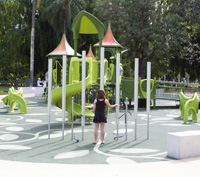
City Botanic Gardens attractions
The City Botanic Gardens are located close to the city centre and are Brisbane's original botanic gardens. Attractions include a bamboo grove, sculptures, fountains, ornamental ponds, the Baldwin Lawn Playground (all abilities playground) and Riverstage.
Baldwin Lawn Playground (all abilities playground)
Baldwin Lawn Playground (all abilities playground)

The Baldwin Lawn Playground is an all-abilities playground provides a variety of play experiences for people of all abilities.
The playground provides quality facilities where children of all abilities can play together in a well-maintained and safe environment. The playground provides access for children in wheelchairs and includes a mix of equipment that is stimulating and interesting for all children. It is supported by changes to park infrastructure to ensure wider pathways to allow carers to walk alongside wheelchairs and upgraded toilet facilities with a ceiling hoist for people with disabilities. The heritage values of the City Botanic Gardens have been used as the basis for the playground design.
Some of the facilities within the playground include an accessible carousel and an accessible sand digger.
Photo gallery
View a photo gallery of the Baldwin Lawn Playground in Council's Flickr account.
Bamboo Grove
Bamboo Grove
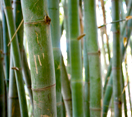
The Bamboo Grove is a collection of 23 bamboo species. It was planted to commemorate the bamboo collection that was lost in 1937. This occurred when the gardens' Fern Island attraction was drained and filled as a result of mosquito complaints.
Cannon (serial 63914)
Cannon (serial 63914)
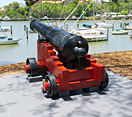
In 1862 12 cannons, cast between 1797 and 1810 by the Carron Company ironworks in Scotland, were sent to Brisbane on the immigrant ship Clifton. The cannons were provided to defend the new colony of Queensland and were originally set up in Queens Park (now part of the City Botanic Gardens) as a firing battery on the bank of the river.
This cannon, serial 63914, was cast in 1803. In 1909 it was moved from Queens Park to Cameron Rocks Reserve by Hamilton Town Council. In 1954, it was relocated again and set up at the Bulimba power station on Gibson Island. In 1982 it was swapped with another cannon restored by the Naval Cadets. The cannon was reinstated in the City Botanic Gardens in 2015. It faces the Brisbane River next to the pathway near the Alice Street entry.
Jemmy Morrill and the Brolgas sculpture
Jemmy Morrill and the Brolgas sculpture
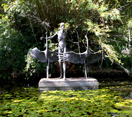
Queensland artist, Lindsay Daen, created this bronze sculpture. It's on permanent loan from the Queensland Art Gallery.
The sculpture is of a 22 year old seaman, Jemmy Morrill, who was the sole survivor of a shipwreck on the outer edge of the Great Barrier Reef in 1846. Aboriginal people found him and he lived with them for 17 years before returning to a European settlement in the Bowen district. He went on to play an important role in improving relations between the Aboriginal people and early settlers.
Ornamental ponds
Ornamental ponds
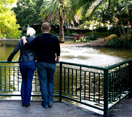
Harry Oakman, former Manager of Brisbane City Council's Parks' Department and landscape architect, designed the top ornamental pond. It was created between 1958 and 1960. The lower ornamental pond was part of the City Botanic Gardens' original natural creek system.
River frontage
River frontage
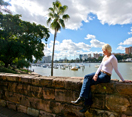
This area provides great walking and cycling opportunities to make the most of the gardens' location on the Brisbane River.
Riverstage
Riverstage

Since it was opened in 1989, over 1.5 million people have enjoyed the Riverstage. It's estimated that 100,000 people attend events here each year.
Walter Hill Fountain
Walter Hill Fountain
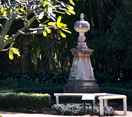
In 1867 the Walter Hill drinking fountain was built to provide much needed drinking water to the public. It was built at the time of the first reticulated water supply in Brisbane. The fountain was used until 1930 when new bubble fountains were installed. These were more hygienic than drinking with a cup, which was the case with the ornamental fountain. Water to the ornamental fountain was turned off and remained inoperable until recently.
In 1972 the fountain was named the Walter Hill Fountain as a tribute to the first gardens' curator. A plaque was attached to its base. In 1995 conservation work took place and in June 2005 the fountain was once again open to the public.
Weeping Fig Avenue
Weeping Fig Avenue
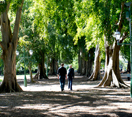
The Weeping Fig Avenue was planted in the 1870's as a barrier between the northern boundary of the City Botanic Gardens and Queen's Park.